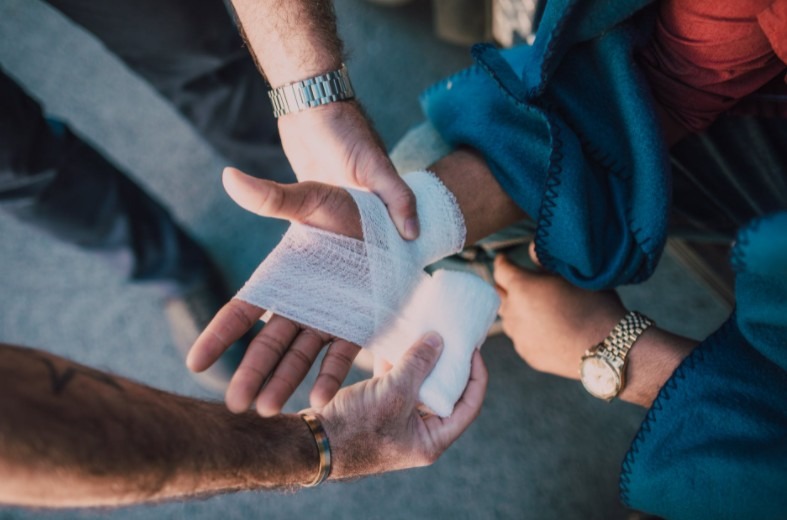Most people overlook the importance of learning first aid until something terrible happens. Your child chokes on a toy, someone sustains a life-threatening injury at work, or your wife delivers a baby while on the way to the hospital. And the main excuse for not acquiring these life-saving skills is “lack of time.” However, Ready Response – CPR & First Aid Training has a one-day course with everything you need to know.
What Is First Aid?
Simply put, first aid is temporary health care for ill or injured people. You can think of it as a set of instructions on preserving life until the paramedics arrive. And it includes learning skills such as controlling bleeding, clearing an airway, and performing CPR on a non-responsive person.
To acquire these skills, you’ll need to attend a first aid class. The instructors will show you how to implement ABC (Airway, Breathing, Circulation), improvise with the available things, and prevent worsening. These skills are beneficial to an individual, but they can also extend to family, co-workers, and even some lucky strangers.
What Tools and Instruments Do You Need for First Aid?
A first aider needs a few tools and instruments to be effective. That’s the main reason why you’re required to have one in the car, business premises, and public gatherings. And they should have tools for controlling bleeding, supporting breathing, and performing CPR at the bare minimum.
That said, here are the absolute must-have tools for your first aid kit.
- Gloves
- CPR pocket mask
- Tourniquet
- 4X4 gauze pads
- Roller gauze
- Sam splint
- Trauma shears
- Two triangular bandages
- Medical tape
With these tools, you’re pretty much prepared for anything life may throw your way. And, it is absolutely important to replace any used items as soon as you’re done with the emergency.
Why Is First Aid Important?
It Helps Save Lives
There’s a noticeable difference between situations where an injured or ill person receives first aid and when they don’t. The patient who receives first aid has higher chances of recovery, and progression is highly unlikely. Then there is the issue of confidence. A person trained in first aid is more confident than someone with little or no life-saving skills.
It Helps the Responder to Provide Comfort
Nothing reassures a patient than seeing a confident caregiver trying to save their life. This goes a long way in reducing the possibility of them going into shock. In addition, an experienced first aid giver will also try to communicate with the patient to know how they can help or simply keep them awake until help arrives.
It Brings a Great Sense of Safety
When you have someone with life-saving skills on board, you get a greater feeling of safety. This is especially true for people with seizure-inducing conditions or those who work in high-risk environments. That’s why most companies send a few team members for training, just to be safe.
What Are The Most Common Injuries in Children?
Burns, choking, and drowning are the most common types of emergencies parents have to deal with. Drowning and choking are particularly dangerous, as you need to act fast to preserve life or prevent further damage.
You might also encounter broken bones, gunshot wounds, and poisoning. And that’s why every parent should know a thing or two about first aid, along with having the basic tool kit.
What Are Common Emergencies in Adults?
Bleeding is the number one cause of emergencies in adults. And it’s usually a result of car and tool-related accidents. However, not all cuts require medical attention. You can easily stop the bleeding at home, disinfect it then throw gauze on top of it. Then there are situations when you can’t seem to stop the bleeding, and that’s where first aid training comes in.
Breathing difficulties are also another common emergency with adults. And it’s usually caused by asthma, allergies, and colds. During this attack, the patient feels pain when breathing or has a tight feeling in the chest area. These can also be warning signs of a bigger problem, so you need to act fast.
Collapsing is yet another common emergency among adults, and it is one of the most life-threatening situations any first aid caregiver can deal with. And that’s where your first aid training applies. You first confirm if the airway is blocked, then make sure the patient is breathing normally. It is also the point where you do CPR and hopefully restores a fading heartbeat.

